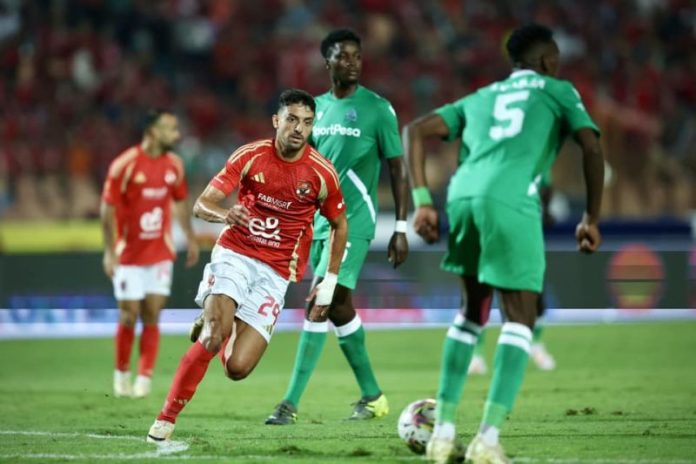Kenyan football took a hit recently as two of the country’s top teams, Gor Mahia and Kenya Police, were eliminated from their respective continental competitions by African powerhouses Al Ahly and Zamalek. These defeats, while tough to accept, provide valuable insights into the growing challenges Kenyan clubs face when competing on the continental stage. Despite moments of promise, the performances of Gor Mahia and Kenya Police laid bare significant gaps in several areas that need to be addressed if Kenyan football is to rise to the level of Africa’s elite.
Here are four critical lessons from the CAF Champions League and Confederation Cup exits that should shape the future of Kenyan football.
1. The Quality Gap: Kenyan Clubs Must Improve Player Development
The first and most glaring takeaway from Gor Mahia’s defeat to Al Ahly and Kenya Police’s loss to Zamalek is the massive gap in player quality. While Kenyan clubs are filled with passionate and hardworking players, the caliber of talent at clubs like Al Ahly, the record African champions, and Zamalek is simply on another level. Gor Mahia’s lack of experience and skill was evident, as they struggled to keep up with the speed, technical ability, and composure of their Egyptian counterparts.
Kenya Police, on the other hand, showed glimpses of potential, with Zamalek coach Jose Gomes even commenting that they had the ability to compete at higher levels. However, their profligacy in front of goal and lack of killer instinct in key moments highlighted that while they have talent, they still fall short in comparison to the best on the continent.
Key Takeaway: Kenyan clubs need to focus on improving player development. This includes better scouting, more effective coaching, and exposure to high-level competition. Investment in youth academies and development programs can help raise the technical standards of Kenyan players, giving them a better chance to compete with Africa’s elite.

2. Tactical Discipline: The Importance of Structure on the Pitch
Beyond the quality of players, another critical area where Kenyan teams were exposed was tactical discipline. Gor Mahia and Kenya Police appeared to lack the tactical structure and organization of their Egyptian opponents. Al Ahly and Zamalek approached both games with clear game plans, executing disciplined pressing, maintaining shape both with and without the ball, and exploiting the tactical weaknesses of their opponents.
Gor Mahia, in particular, were often caught out defensively, with Al Ahly forcing turnovers and quickly transitioning to exploit gaps in their defense. Similarly, Kenya Police struggled to apply pressure cohesively, with individual players pressing high up the pitch while others were slow to close down space, leaving gaps for Zamalek to exploit.
Key Takeaway: Kenyan clubs must prioritize tactical training. Coaches need to instill a greater understanding of positional play, pressing as a team, and maintaining defensive organization. Watching how teams like Al Ahly and Zamalek execute their tactical plans could provide valuable lessons for Kenyan coaches.
ALSO READ:
- Gor Mahia Eyes KPL Title After Learning Harsh Lessons in CAF Champions League
- Gor Mahia Dumped Out of CAF Champions League by ruthless Al Ahly
- Kenya Police FC Bow Out of CAF Confederation Cup After 3-1 Aggregate Loss to Zamalek
3. Infrastructure Deficiencies: The Foundation for Growth
One of the most significant barriers to Kenyan football reaching its full potential is the stark contrast in infrastructure between clubs like Gor Mahia and Kenya Police and their African counterparts. Al Ahly and Zamalek boast state-of-the-art facilities, from world-class training grounds to advanced medical and recovery facilities. In contrast, many Kenyan clubs struggle to find adequate training spaces, let alone the additional resources needed to develop players to their full potential.
As Kenya’s national team coach, Engin Firat, pointed out, the country lacks proper infrastructure. Outside of the Kasarani Annex, there are few decent facilities that can support top-level training. This infrastructural gap hampers player development and leaves Kenyan clubs at a disadvantage when facing more prepared and better-equipped teams.
Key Takeaway: To bridge the gap with Africa’s elite, Kenya must invest in football infrastructure. This includes building better training facilities, providing access to modern medical care, and creating environments where players can focus on improving their skills without logistical challenges.
4. The Power of Fan Support: A 12th Man Advantage
One of the few bright spots in Gor Mahia’s continental campaign was the overwhelming fan support they received. In both the home and away legs against Al Ahly, Gor Mahia’s fans turned up in large numbers to support the team. The passion and dedication of these supporters, both at Nyayo National Stadium and Cairo International Stadium, showed the vital role that fans play in motivating players and creating an atmosphere that can intimidate even the toughest opponents.
While Kenya Police lacked the same level of fan support due to being a corporate entity and Zamalek playing behind closed doors due to sanctions, the lesson remains clear: fan engagement is a critical factor in football success. The emotional lift that a strong fanbase provides can sometimes be the difference between winning and losing.
Key Takeaway: Kenyan clubs should focus on building strong fan bases and creating more engagement with supporters. Fan-driven initiatives and matchday experiences can strengthen the connection between clubs and their supporters, giving players an extra boost during important matches.
Closing the Gap with Africa’s Best
The continental exits of Gor Mahia and Kenya Police serve as a wake-up call for Kenyan football. While the road to competing with Africa’s football giants like Al Ahly and Zamalek is long, the lessons learned from these defeats provide a blueprint for improvement.
Kenyan clubs must invest in player development, embrace tactical discipline, upgrade infrastructure, and engage their fanbases more effectively. Only through these changes can Kenyan football begin to close the gap and become a force to be reckoned with on the continental stage.



